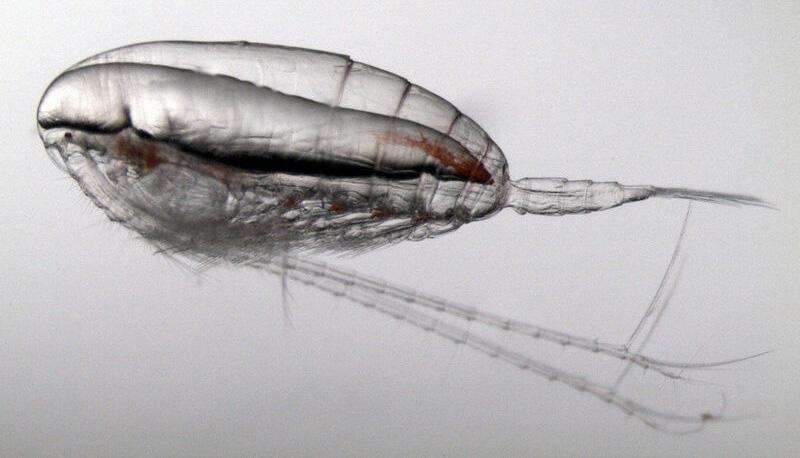A new peer-reviewed study in the Journal of Plankton Research, shows copepods are more nutritious in the southern Gulf of St. Lawrence than in other foraging areas. Copepods, which are North Atlantic right whales’ primary prey, are larger and more lipid-rich in this region. They provide a higher quality diet for right whales compared to copepods in the Gulf of Maine and off Nova Scotia, even though abundance may be less dense.
The lead authors on the paper are from the Department of Fisheries and Oceans Canada. NOAA Fisheries researchers and academic colleagues at the University of Maine are also among the authors.
“This collaboration with our Canadian colleagues represents an important component for right whale conservation by building a greater understanding of the transboundary prey resources that drive right whale distribution,” said Chris Orphanides, an author on the paper. He is the protected species lead for our offshore wind team at the Northeast Fisheries Science Center.
The copepods, Calanus finmarchicus, are planktonic crustaceans that occur in large numbers across the North Atlantic Ocean. The whales swim slowly through aggregations of Calanus, straining large numbers of these tiny crustaceans from the water.
Researchers analyzed historical and current data on body size and nutritional content of Calanus across five regions on the Northeast Atlantic continental shelf.
This paper suggests that regional variation in whale prey energy content can play a significant role in the suitability of current and potential future whale foraging habitats in the Northwest Atlantic. The higher quality food available in late summer in the Gulf of St. Lawrence may also be a factor in the recent consistent appearance of more right whales in that area.
This research supports NOAA Fisheries’ overarching North Atlantic Right Whale Road to Recovery, which describes our efforts to address threats to the species and halt the current population decline. This study supports the overall goals of the Road to Recovery by increasing knowledge about the distribution, abundance, and quality of key prey available to North Atlantic right whales.



